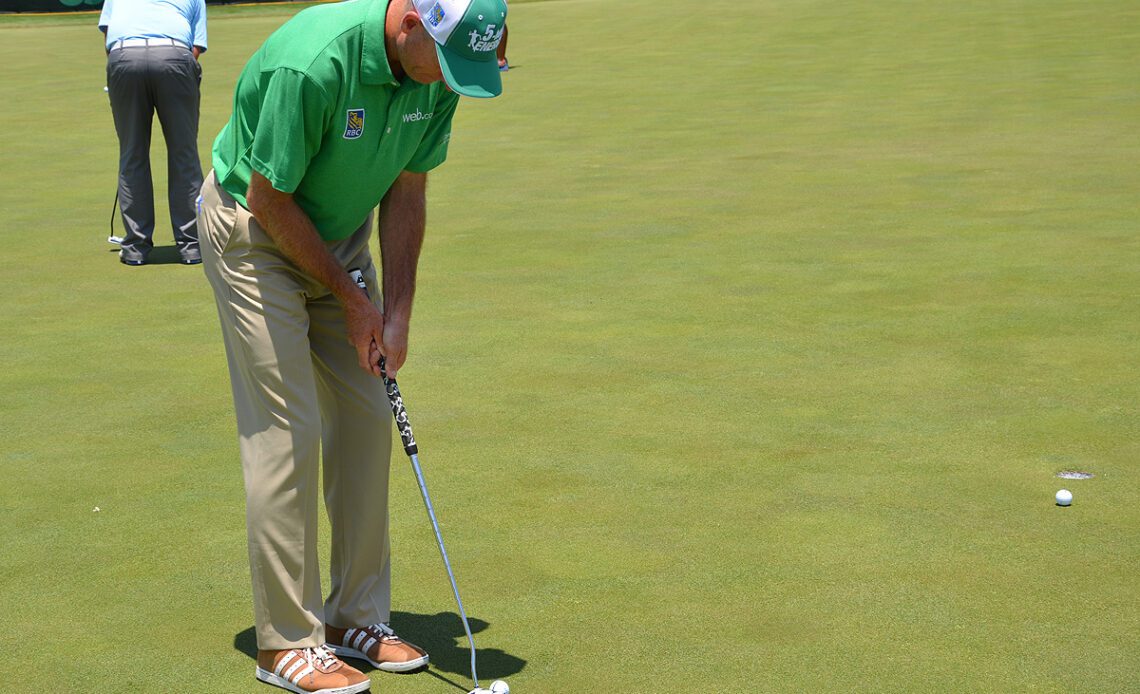Jim Furyk used a counterbalanced Odyssey Versa 2-Ball putter on Tuesday before the 2014 U.S. Open at Pinehurst.
“It definitely worked for some players, and then the one kind of knock on it, if there was one, was that for some players it was really good on short putts, but harder to control on longer putts. It’s sort of like putting with a sledgehammer. If you’ve only got to move it a couple inches to knock in a four-footer, it’s fine. But if you’re trying to finesse a 45-footer with 10 feet of break, that gets harder, so we kind of kept looking at other things.” – Luke Williams, Odyssey
“Putters came out where you had basically taking belly putter heads, which were 400 grams, and using those same heads and then having to put an extra-long grip and 50 grams up on the top. They balance really well, but the overall weight got way too heavy. On short putts it was great, but we quickly learned that on long puts, it was harder to control and so that’s where you’ve got these kind of modern counterbalanced putters.” – Austie Rollinson, Titleist
“When they went into something counterbalanced, if we looked at it on a Trackman and you could study pace, their stroke became faster and less consistent. And at the end of the day, that’s the opposite of what the majority of people need.” – Nick Jahnke, PXG
“I think when players went really heavy, they lost their sense of touch and feel. Especially on lag putts. Now, Viktor Hovland is a great example of this, some players are using a mock-belly putter that is longer, like 38 inches, but they grip it down. That gives you a little of that counterbalanced feel, but the whole putter doesn’t get so heavy that you lose touch.” – Marty Jertson, Ping
..
Click Here to Read the Full Original Article at Golfweek…
